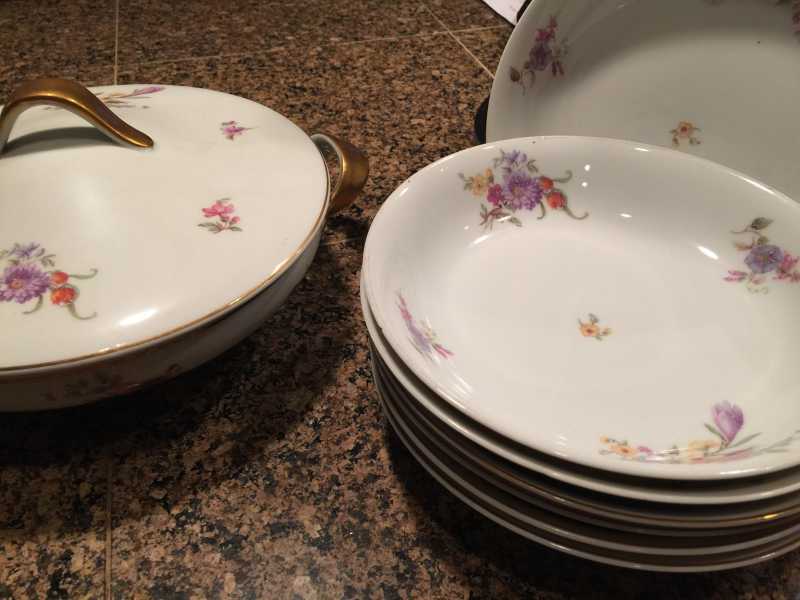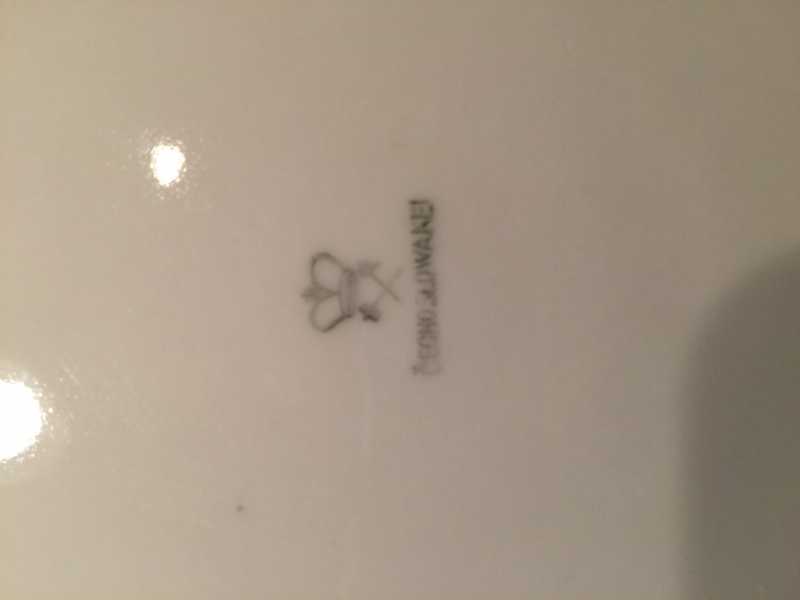What you have there is a set made at the factory of [b]Sommer & Matschak[/b] from the town of [i]Schlaggenwald[/i] (today the Czech town [i]Horní Slavkov[/i]), located in former Austrian Bohemia which in 1918 became part of the newly founded state of Czechoslovakia (today: Czech Republic).
The “name” you see is the country of origin designator. It’s form and appearance are “unusual” (as in: confusing for you) as it was a preliminary version which did not meet international requirements at that time – it’s in German language (not English) and contains a leading [i]C-Hatschek[/i] (a capital ‘C’ with a small ‘v’ above it’, representing the phoneme ‘cz’), a non-Western Latin character.
Following the installment of the first versions of the [i]British Merchandise Act[/i] as well as the [i]US McKinley Tariff[/i] act, politicians and trade experts demanded a clarification towards international markings, finally agreeing that only English language and Western Latin characters should be allowed. This became “official” internationally with the second ammendment to the [i]McKinley Tariff Act[/i] from 1921 (the same ammendment which also demanded the use of “Japan” instead of “Nippon”).
Means: shown mark was used between 1918 and 1921 only.


